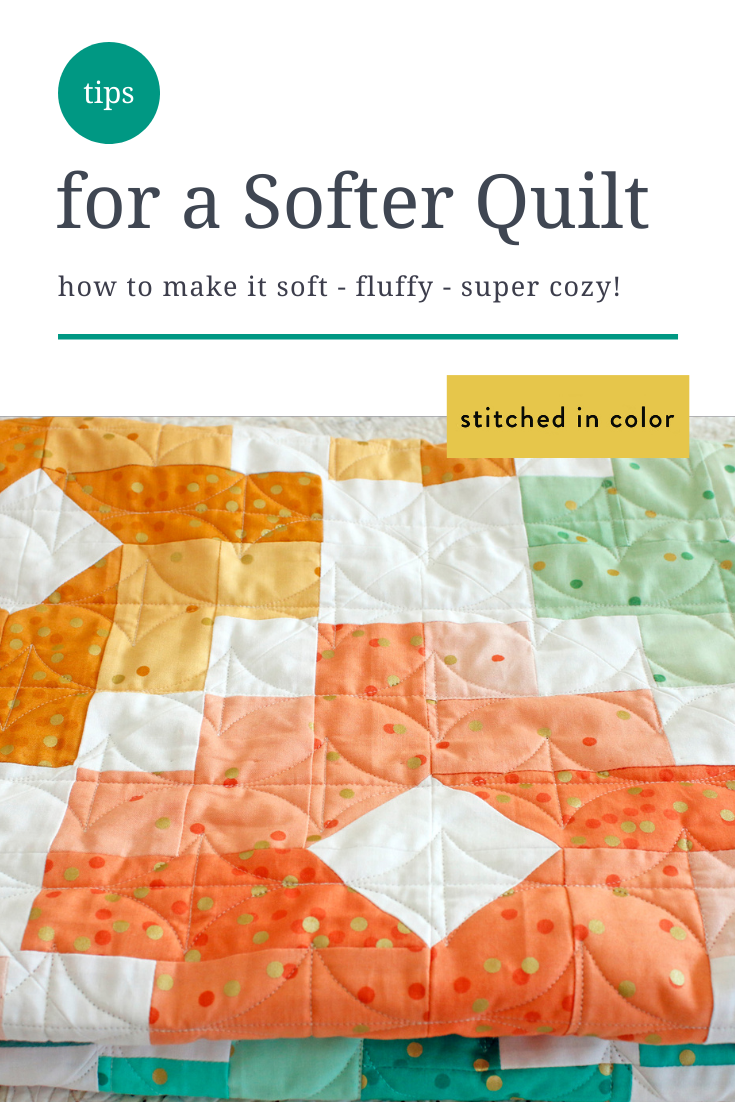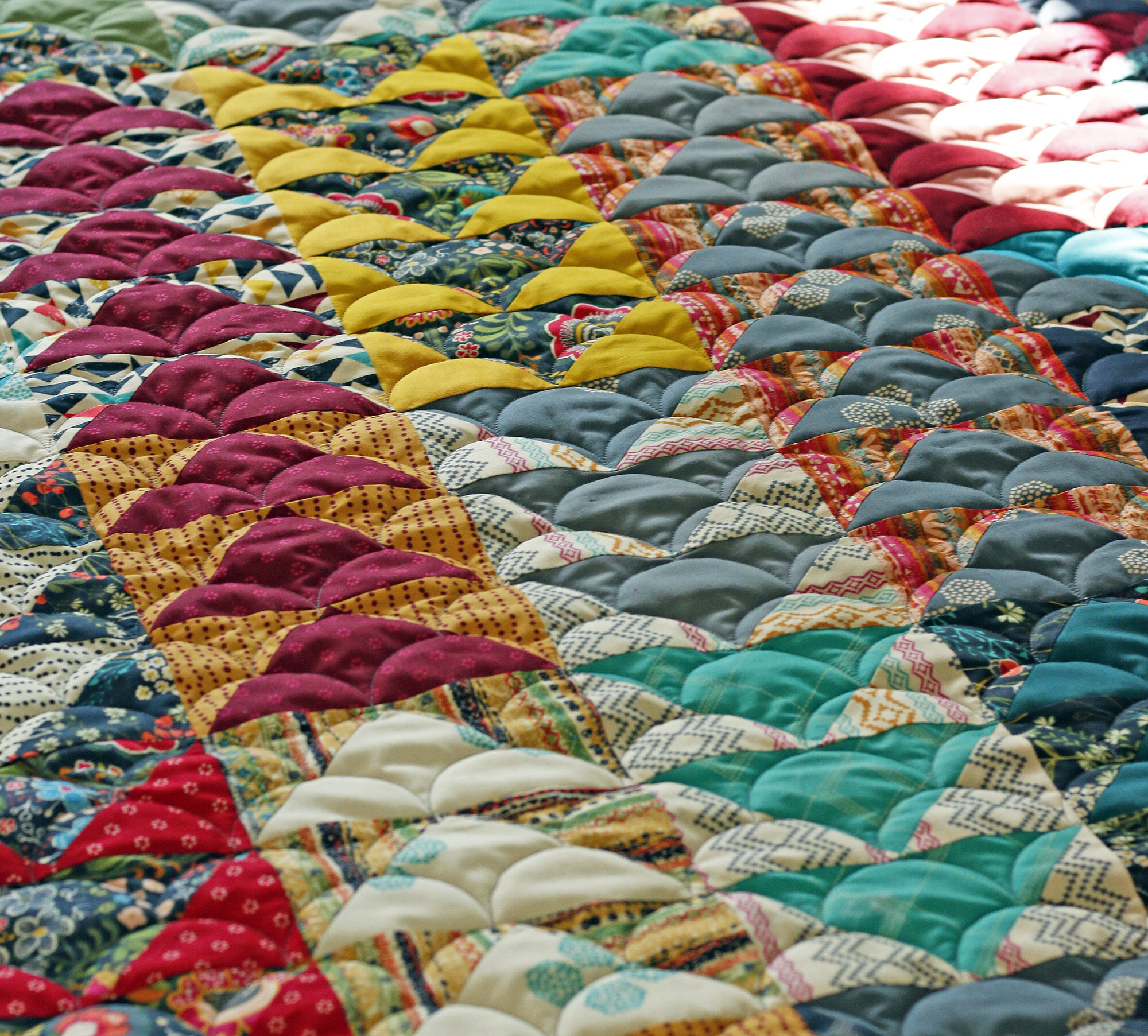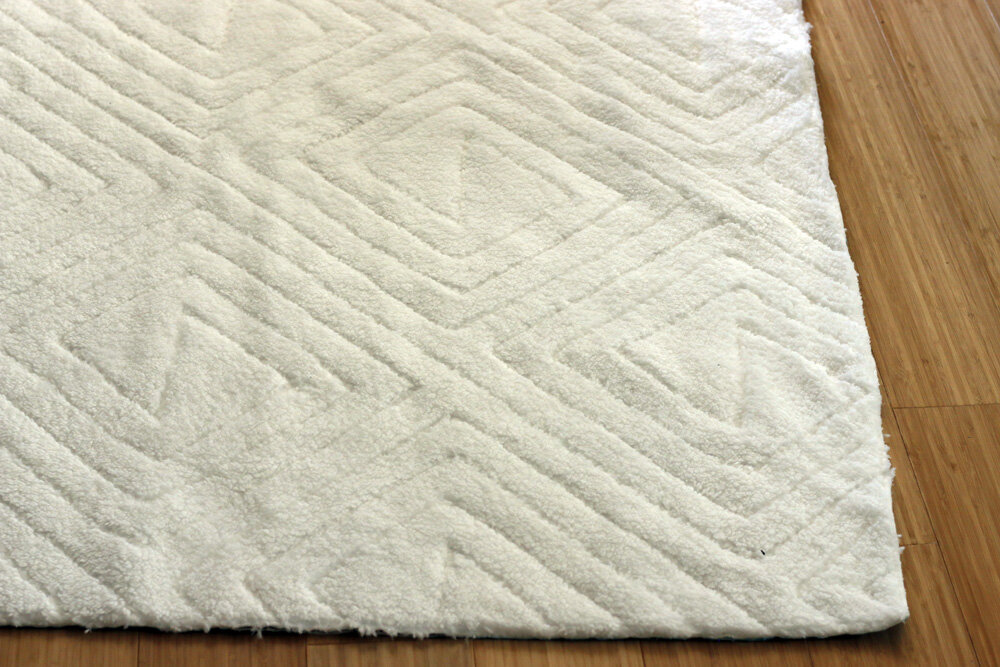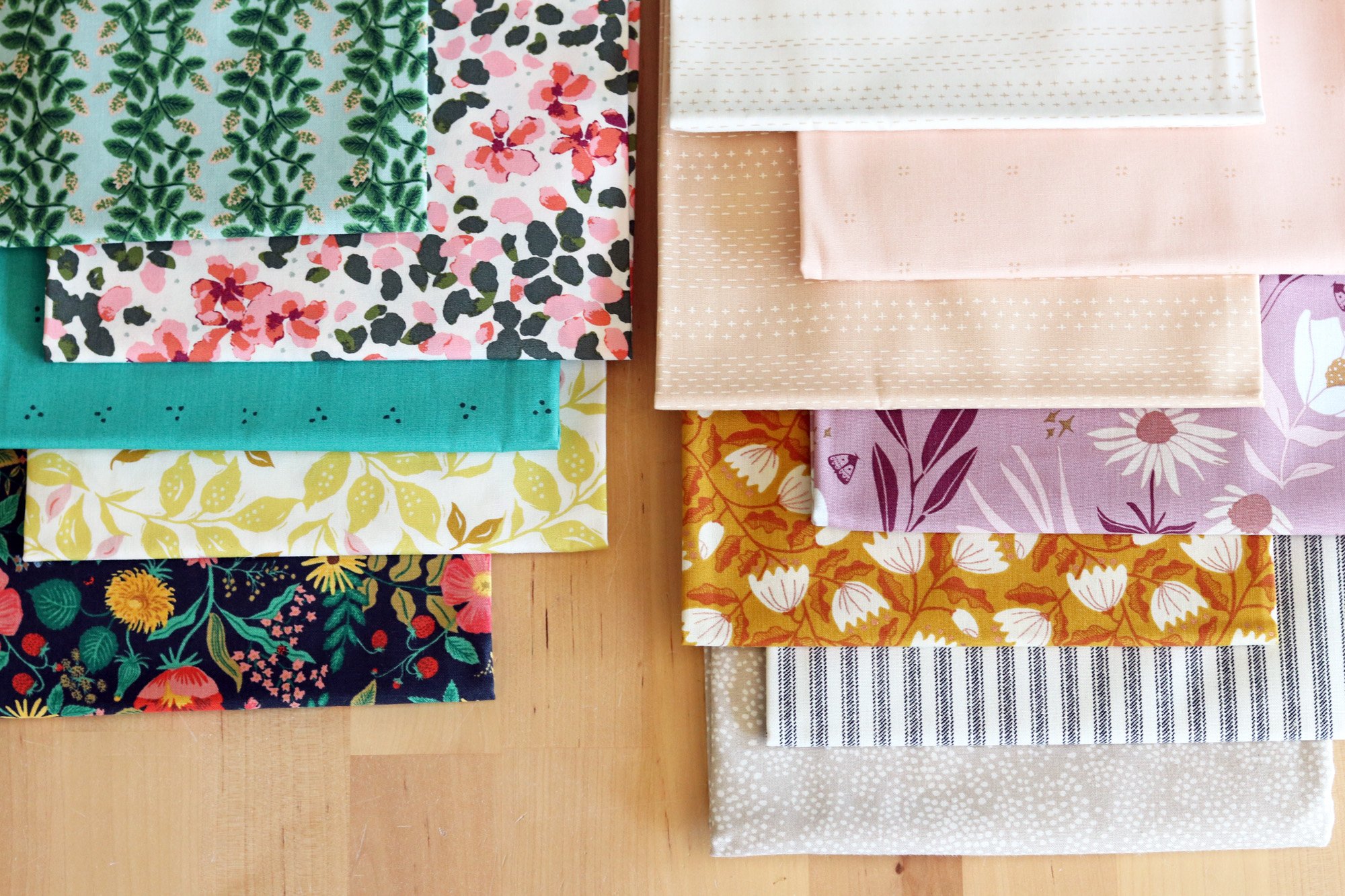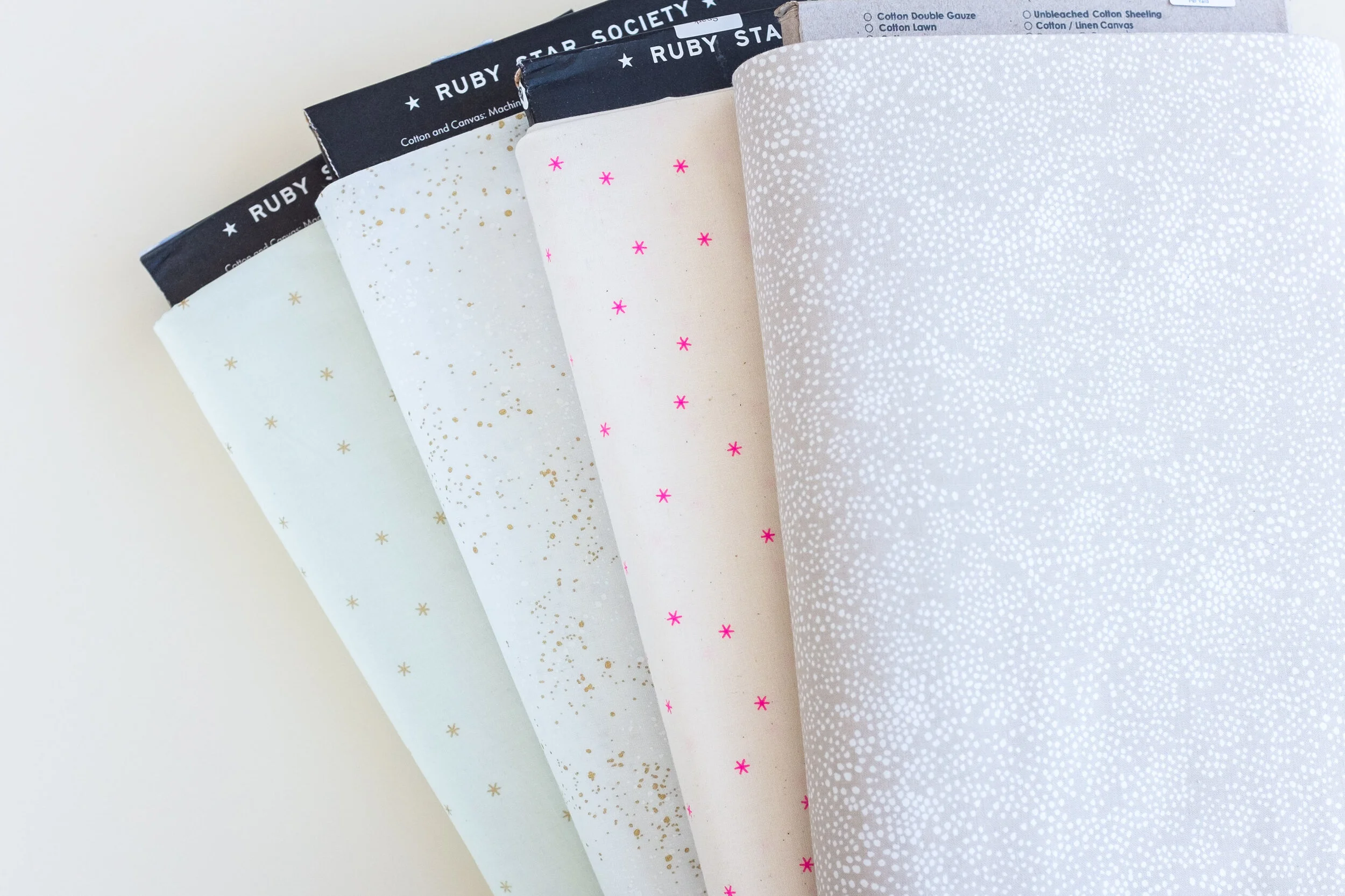how to make a Soft, Cuddly Quilt
Some quilts are soft, fluffy, super cozy. Others finish a bit on the stiff side (or really, quite stiff!) with a flat, thin appearance. As a longarm quilter, I witness the transformation of many quilt tops into finished quilts. Would you like to know the secrets to creating a soft, cuddly quilt? These are the most important factors.
4 Tips for a Softer Quilt
#1 Loftier Batting
Low loft cotton batting is the standard these days for modern quilters. Loft refers to how thick and fluffy the batting is. Battings like Warm & White and Quilter’s Dream Select are low loft - i.e. thin.
With low loft battings the quilting lines blend into the quilt top as much as possible, since there is not much depth to the quilt. However, this lack of depth = a thin, flat appearance that is the opposite of cozy. Consider polyester batting for mid-high loft and wool batting for high loft. Either option will give your quilt quite a bit more oomph.
And bonus, more loft = more warmth!
To prove just how big of a difference batting we’re talking about, see exhibit A:
This is a stack of batting in my longarm quilting studio. The bottom two battings are king size low loft cotton. The next batting, which looks gigantic in comparison, is a wool batting also king size. That, my friends, is going to make a much cozier quilt!
I suggest Soft & Bright batting for a polyester option and Quilter’s Dream Wool for a wool option.
#2 Open Quilting Style
There’s not getting around it - less quilting equals a softer quilt. Now, I do love the look of dense quilting, but I save that for bed quilts or wall hangings. For a quilt you’d like to cuddle on the sofa, open quilting will yield a softer quilt.
What’s “open”? When the largest space between quilting lines is about 1”, I consider that medium density quilting. Open quilting is bigger. For open quilting, look for a pattern that has regular spaces of 1.5” + between quilting lines.
Also, choose a design that has fairly regular quilting coverage. If your quilting pattern is tight in some areas (several of lines coming together at one point) those areas will feel more stiff for sure. A soft, curved design often does wonders.
Here’s a example of an ideal quilting design for a soft, cozy quilt. The clamshell pattern provides even quilting coverage, rather than getting tight in some places. It looks nice at a scale that allows generous openings between quilting lines. This quilt was finished with wool batting. Doesn’t it look cuddly?
quilt by Saskia @FlamangoTango
Also consider loopy quilting styles, like this quilt I recently finished for Saskia. Loops often create an open quilting style and look pretty at a large scale. Her quilt is finished with low loft cotton batting, so even though the quilting is open, it looks flatter than the last example.
Sponsor of the Week
Annie’s Kit Clubs
Fun to get and give! These ready-to-make club kits ship throughout the United States and Canada, with everything prepared for you. Crafts for young and old from card-making to knitting to sewing. Right now ALL clubs are 75% off your first month.
Holiday Quilters - Seasonal Quilt Projects, All Year Long
What a fun time to try Holiday Quilters Club! This monthly subscription includes all the instructions, patterns and high-quality, name-brand fabric you need to create a new seasonal project you can finish quickly and use right away. Beginner-friendly!
#3 Special Backing
Want to really make your quilt extra soft? Skip regular quilting cotton and go for a special backing fabric instead. Think something that already feels cuddly - flannel, minky/cuddle, fleece, etc. One of my customers skips batting entirely and uses a thick, plush fleece for her quilt backings. The result is a slinky quilt that’s nice and warm too!
Keep in mind that stretchy fabrics (knits like fleece and minky) will be harder to work with. Take care not to stretch them while basting and quilting. An experienced longarm quilter should know how to handle these special fabrics.
Have you ever snuggled a quilt with a plush backing? They're amazing. You’ll find it’s totally worth the trouble.
#4 Large Scale Patchwork
If you’ve finished your quilt top, it’s a bit late for this tip, but you can keep it in mind for next time.
When your goal is the softest, coziest quilt possible, choose a patchwork style that has more big pieces of fabric and less piecing. That’s right - less work for you too! Intensive piecing (think 1.5” squares) results in a heavier, stiffer quilt top as compared to large piecing. There’s only so much you can do to make intensive piecing soft. On the other hand, if you opt for large patchwork, your quilt top will naturally have lots of drape and a soft touch.
Fortunately, large scale designs can be quite pretty!
I hope this helps you plan your next cozy quilt project. Have even more tips for a softer quilt? I’d love to hear what works for you in the comments!
Note: This post includes affiliate links. Thanks for supporting my blog!
